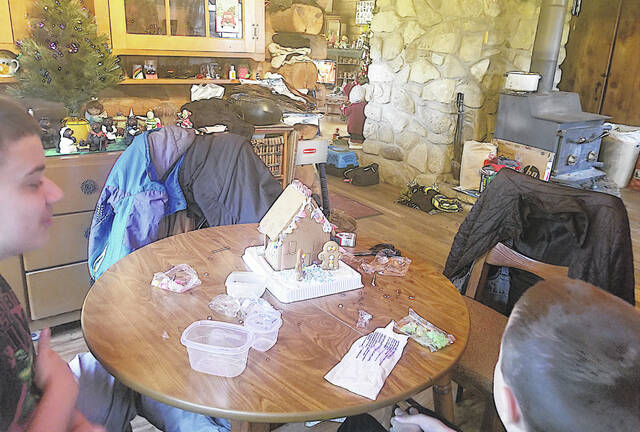
Gingerbread houses have been for thousands of years and for many they remain a staple of Christmas holiday tradition.
Some families even turn making them into a competition with rules including that the house must be 100 percent edible and 75 percent gingerbread. The judges can be other family members or friends not competing, or the houses can be posted online for judging. Gingerbread houses are judged on their overall appearance, originality or creativity, how difficult it was to make, and the consistency of a theme.
When competing in a cookie swap, the cookie should be judged on taste and appearance. The cookie shouldn’t be an ordinary cookie, such as chocolate chip. It shouldn’t be gooey and the main ingredient should be flour. If you burn your cookies and don’t have time to make more, you can use bakery cookies, but never store bought cookies. Cookie swaps are usually on a specific day. Nationally, cookie swaps are celebrated on Dec. 23. The best part of the cookie swap is you get to eat cookies and take some home.
Gingerbread has been around thousands of years. Ancient Greeks and Egyptians used gingerbread in religious ceremonies. Gingerbread was brought to Europe in 992 by an Armenian monk. Through the 17th century, gingerbread was used for religious ceremonies. In the late 17th century, gingerbread became associated with Christmas.
Russian bakers prepared gingerbread men and women, usually as replicas of those people attending parties.
Gingerbread houses were introduced about 200 years later, when the Grimm brothers wrote Hansel and Gretel. A new holiday tradition was born. People took the witches’ house and made it into a merry winter wonderland of cottage houses.
The gingerbread Germans made was a harder consistency than more modern gingerbread, and people began using it to make their pretend houses. They could build taller and fancier houses. Gingerbread houses are adorned with gumdrops and other candies, along with confections.
The earliest cookie swap in America was recorded around 1703. The event was held in New Amsterdam, now New York, by the Dutch. The Dutch had brought the custom with them from the old world.
As other immigrants came to the United States, they brought their customs and recipes with them. Some of the first cookies during cookie swaps were ginger molasses, Mexican wedding balls, Swedish overnights, and sour cream cherry shortbread cookies.
Other things to remember if you are hosting a cookie swap are to try to keep track of who is bringing what, ask your guests to bring copies of their recipe for the other guests, and provide plastic trays or bakery boxes for guests to take their cookies home.
Mostly, in the spirit of Christmas, have fun when gathering with your family and friends and be thankful for everything the holiday has to offer.
Sources for this story included history.com, epicureandculture.com, blogsbelievue.edu, grunge.com and content.time.com.
Jackie Wolgamott is a stringer for The Times-Gazette.


